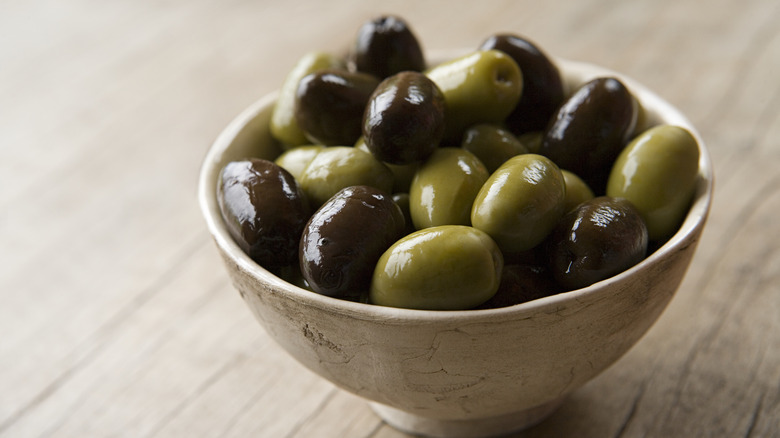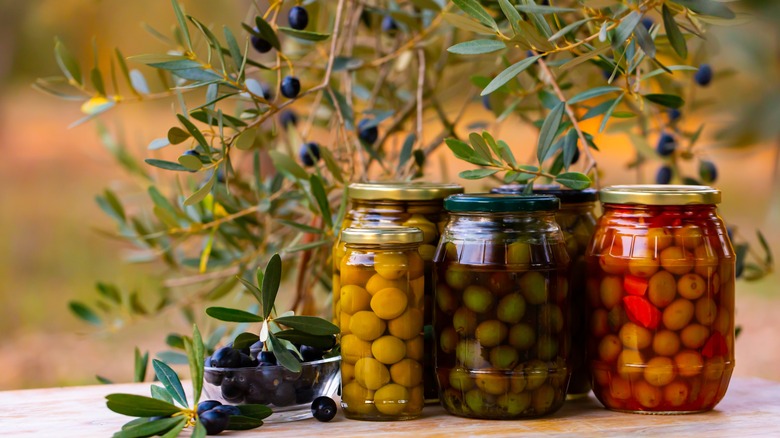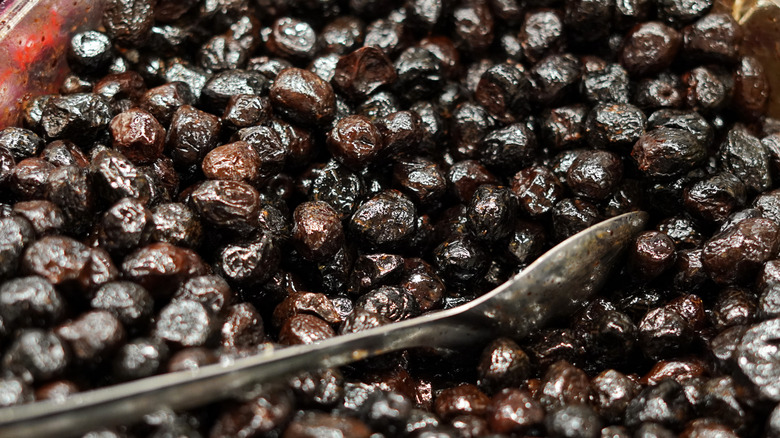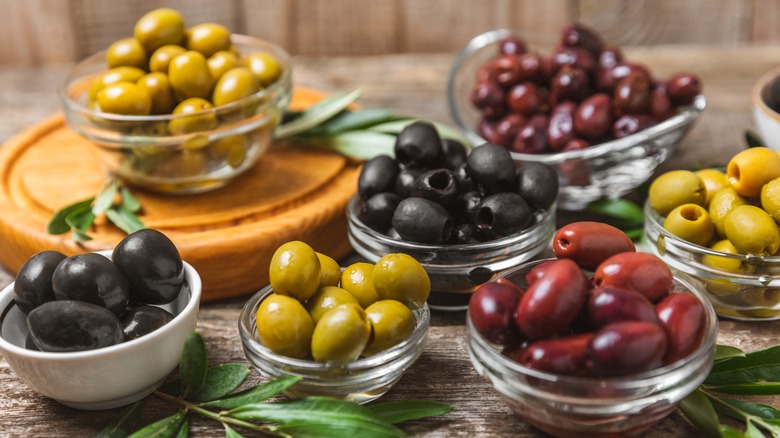Brine-Cured Vs Dry-Cured Olives: What's The Difference?
If you've ever seen an olive tree, you likely noticed that the fruit is not exactly the same as what you buy in a jar from the grocery store. Not only have fresh olives not been pitted and processed for convenience, but they are far from the flavor or texture you might want in a martini or on a pizza. Fresh olives are very firm and have an intensely bitter flavor that is not palatable. That's why olives must be cured before they can be enjoyed.
Curing olives is an ancient tradition that dates to 4600 B.C. in the Mediterranean region. While there are hundreds of varieties of olives, there are only a few methods of curing. The two most prolific and popular methods are brine-curing and dry-curing. Though both of these techniques produce olives that are soft and delicious to eat, they do not use all of the same ingredients. Let's explore the world of olive curing and learn how these two processes are similar yet different enough to yield distinctive results.
What are brine-cured olives?
Brine-cured olives are soaked in a solution of saltwater, typically for several months to a full year or more. This method not only softens the texture of the olives but also removes their natural bitterness. The saltwater solution is often flavored with herbs or spices, which infuse the olives with a mild, salty flavor while also preserving their natural texture, albeit softer. This is why olives tend to lend a salty flavor to dishes and recipes that need a hint of the harmonizing ingredient.
The choice between brine-curing and dry-curing often depends on personal preference and regional traditions. Brine-curing is ideal for green olives as well as black and purple olives. Brine-cured olives are typically the jarred olives suspended in liquid that you find in the grocery store — the fruit is still packed in a saltwater solution. You can, however, find dry-cured olives at your local store too.
What are dry-cured olives?
Dry-cured olives, on the other hand, are covered with a layer of salt and then left to air dry, often in the sun, for a shorter period of time than their brine-cured counterparts — typically one month. Once dried, they are rinsed with olive oil to remove excess salt. By using olive oil instead of water to rinse the olives, the fruit does not continue to dry out. Instead, it traps the remaining moisture inside and prevents mold growth.
This method yields olives with a more concentrated flavor and a chewy, meaty texture. You might notice a few wrinkles on the exterior of these olives too. This change in appearance is simply because the moisture has been drawn out of the olives to a point.
Dry-curing is preferred for black olives, like Nyons and Gaetas, thanks to the intense flavor and thick texture. Each method offers a unique sensory experience, showcasing the versatility and complexity of this beloved Mediterranean fruit. It's worth considering how the olives will be eaten or what the recipe is in advance to choose the best type of cured olives to incorporate into the dish.
The key difference is the use of water
The primary difference between these two curing methods lies in the use of water since both utilize salt. This single difference has a profound impact on the flavor and texture of the olives — and texture can be key, just like with pre-pitted vs. whole olives. Despite this, how you use either type of olive is rather interchangeable depending on your personal preferences. Both types of olives can be used in salads, as a part of cheese boards, tossed with pasta, or even used to make tapenade.
Traditionally, depending on the variety of olive, brine-cured olives are often found in soups, stews, and salads. Dry-cured olives are often used in tagine, stuffed as snacks, or baked with poultry. When deciding what type of olives to buy or serve, consider what you personally enjoy rather than following any hard-and-fast rules. Go ahead and sample a variety of olives to discover the delicious differences between brine-cured and dry-cured varieties.



